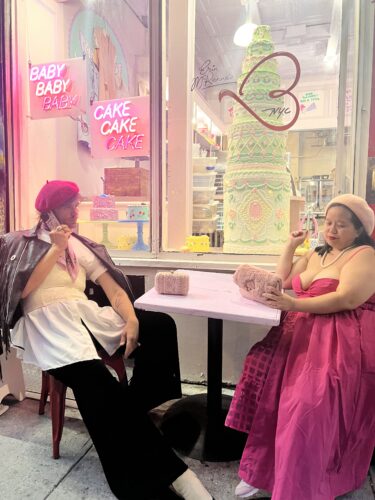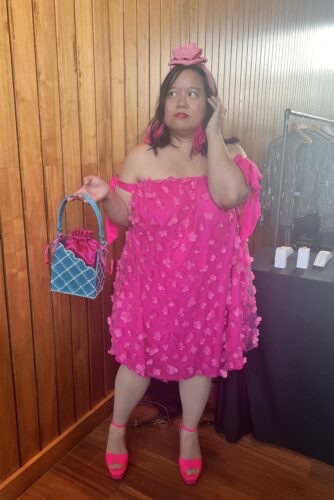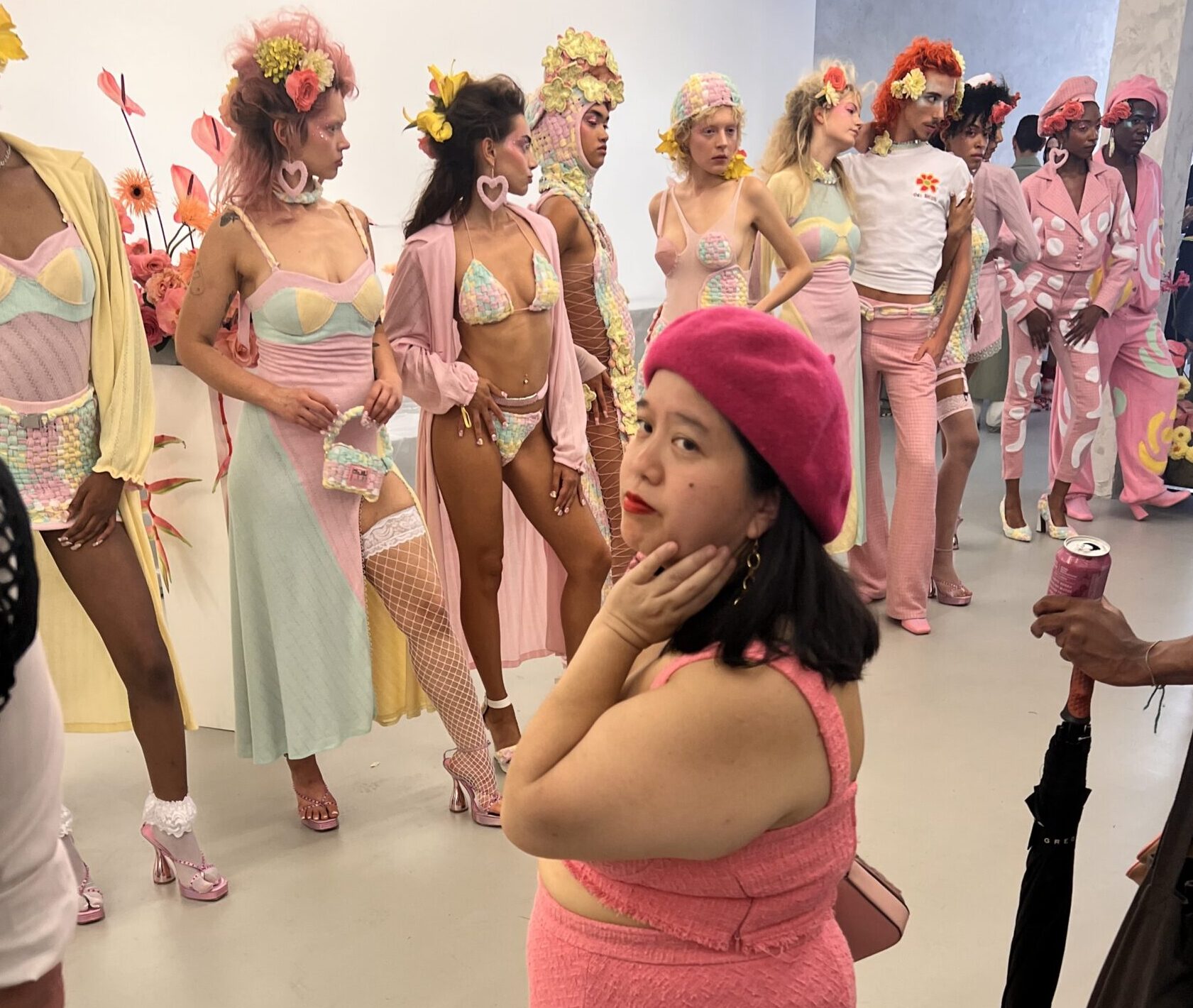Ashley Graham, Paloma Elsesser, and Tess McMillan – what do they have in common? They are all plus-sized women who have graced the cover of Vogue (US and/or UK). I am happy that finally these women are getting noticed — because fashion is for EVERYONE. But the plus-size fashion movement is very slow-moving, and my recent trip to New York Fashion Week made some realities of the industry very clear to me.
I was brought up in the Philippines, where standards of beauty were extremely high. People would eagerly wait to watch and emulate Miss Universe every year. I grew up with the body I had, though at one point – with not much food but lots of exercise – I lost a lot – 108 lbs being my lowest. Even then, many people would tell me that I should be losing weight, or I wouldn’t be able to get a boyfriend. I began to look into how fashion affects people like me, and for the past three years, I have dedicated myself to advocating for body positivity as a fashion and culture influencer.

In 2017-2018, I was a backstage dresser for Toronto Men’s and Women’s Fashion Week. There was not much diversity at all. Back then, I didn’t know anyone who was plus-sized that got cast. All I saw were white, tall, thin women. The volunteers that got noticed, especially by men, were these same women. I have lots of respect for them – but they’re not the only body type that exists.
At New York Fashion Week, I went to six model castings in five days, and since I was accredited as press, I got a behind-the-scenes look at the casting process. From what I saw, diversity is still far out of our reach. There is still a minimum height requirement. There is still a weight preference.
According to a Vogue Business analysis from the Fall/Winter 2023 presentations back in February, out of 9,137 looks from the 219 shows in New York, London, Milan and Paris, London’s Fashion Week booked more plus-sized models than any other city. Only a small fraction got hired in New York and Milan, and even significantly fewer in Paris. There were only about 17 brands that featured plus-sized models (Size 14 and up).
Designers often say that they aren’t left with enough time to do appropriate fittings for plus-sized models, so they prefer to have the fit done for a slim model instead. But after networking with various casting directors in New York, I learned that a lot of the big-name shows finished their casting months ago. So THERE IS A LOT OF TIME. And why not start with plus-size fittings to begin with? Why aren’t more designers saying, “Hey, my designs should be diverse, therefore, I will feature this outfit to a plus-size model”?
It was even mentioned that having smaller-sized clothes is more cost-efficient. I could understand this in the case of an up-and-coming designer with funding coming from their own pockets. What I would never understand is a big high-end designer saying the same thing. Do they think their clothes will only look good on a thin woman?

Another situation I observed in New York was who the photographers were most interested in taking pictures of. I was at a Carolina Herrera show, and I noticed none of the photographers were taking photos of me. I thought to myself, “Maybe it’s because I’m underdressed. If I was styled, then I would have my picture taken.” But that wasn’t the case—there were plus-sized individuals appropriately dressed in high fashion who were also being ignored. The reality of being overlooked really began to hit me. Having this happen to me made it so much more palpable.
I began to think — will I ever survive this fashion world? What if I will never be the influencer they want me to be physically? I already faced that rejection multiple times from men I fell in love with. Because of my body. My weight. Now I was facing the same thing as an influencer, as someone who wants to change people’s perspectives on what beauty is.
At one point, one guy said to me: “What’s with this body positivity issue? A requirement was made for a reason, and people shouldn’t be changing it.” That made me realize the issue. The standard of beauty for men is women who walk the runway, with weight and height requirements that have been the same since the 1980s. As a petite plus-sized Filipina, does that mean I will never be a model? Will I have to stick to working behind the scenes instead? I know that’s not my destiny.
Body diversity in fashion is still far from being accepted. Only a few designers like Karoline Vitto and Sinéad O’Dwyer have cast plus-sized models consistently in their shows, and lately it has caught the attention of the press.
The only editor that I’ve heard of (for now, at least) who really pushed back against the model casting rules was Edward Enninful from British Vogue. He is now the Global Brand Content Director for Vogue, so I’m very hopeful that with him at the helm, fashion will be welcoming of all ages and body sizes. The more we put diversity and inclusivity out there, the more we break the wall.
Or… when I’m on the cover of ANY Vogue Magazine. That will definitely break the cycle of exclusion!



 Follow Us On Instagram
Follow Us On Instagram
